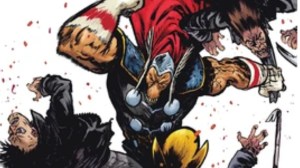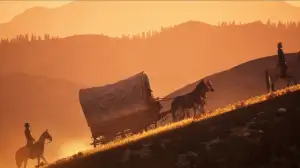With “Crisis on Infinite Earths” finished, a pandemic still raging, and two of The CW‘s six DC superhero shows on their way out the door, it seems like the tradition of the annual Arrowverse crossover is in danger. That’s not great news for the network, who routinely enjoyed not only the shows’ best ratings during the crossover events, but also ratings high enough that it would lift a lot of their non-DC, non-superhero shows when audiences simply didn’t change the channel after the fact. So — what to do? Is there a way to revamp the crossovers, so that they can be COVID-friendly and cost effective, but still feel important and exciting?
Videos by ComicBook.com
Of course there is. All you have to do is look back to the earliest days of the Arrowverse.
When Arrow and The Flash first crossed over, it was more or less as a pair of stand-alone episodes that just so happened to feature the other superhero. This came after a few episodes of Arrow that had featured Barry Allen and a quick pop-in by Arrow in the pilot for The Flash.
Back then, Arrow had not yet fully embraced its superheroic nature, and The Flash pushed the boundaries of what their shared universe would look like. Together, they carved out the basic shape of the Arrowverse, using a dynamic that’s often compared to that of Superman and Batman in the comics. And each time a new DC hero would appear, fans would go nuts.
It’s impossible to fully recapture that, of course; with dozens of DC superheroes already in the Arrowverse, just adding one more wouldn’t be enough to constitute an “event.” But adding the right one would, and using that character judiciously could reshape the way The CW and the Arrowverse handle their events.
Even prior to “Crisis on Infinite Earths,” it felt like the crossovers had hit critical mass. Following “Crisis on Earth-X,” all the shows’ main stars were burned out and exhausted, with cast and crew suggesting during interviews that they might take a break from it the next year. Instead, fans got “Elseworlds,” which was not a break but was decidedly less exhausting than “Crisis on Earth-X.” But it also teed up “Crisis on Infinite Earths,” and with it, the end of Arrow and the start of what now appears to be a kind of makeshift Phase Two of the Arrowverse.
Supergirl and Black Lightning are ending at the end of the upcoming season, while Batwoman has cast a new lead and Superman & Lois will be launching. The following season, The CW may launch Painkiller, a Black Lightning spinoff, or Wonder Girl, which would mark the first official recognition of the Wonder Woman mythology within the Arrowverse.
Given that Batman, Superman, and Wonder Woman are DC’s “Trinity” and the crossover that had been announced before it became clear that COVID would continue to hamper production was between Batwoman and Superman & Lois, it’s possible that this year’s planned crossover could go forward, maybe with a few tweaks, by simply bringing Wonder Girl Yara Flor to Gotham and Metropolis to meet her heroic counterparts in those cities.
This would roughly line up with two different ideas that both feel like they could shape the future of the Arrowverse crossovers: big, bold new characters, and shared experiences that maybe don’t require everyone to be in the same place and fight the same big bad.
For the latter, think about line-wide DC events in the ’80s and ’90s. Often you would see a line of annuals or something, branded for the crossover, and the story inside would just be a one-off that would tie the character whose book it was into the main theme of the crossover. As often as not, that hero would send the villain packing, not realizing that the final battle was yet to come.
Something like that feels like it could be adapted pretty easily. Think about using something like Underworld Unleashed, which featured Hell sending up dead villains and giving them major power upgrades. In the Arrowverse, you could easily tell that story, have some fun with it, and maybe just make sure that Legends of Tomorrow was the last chapter and that each installment leading up to it would include some thing that the heroes could either do or get so that John Constantine could banish the villains back to Hell at the end. That’s a hyper-specific example, but that’s only to illustrate how something like this could potentially work without having to wildly overextend actors’ and crews’ schedules, and create an environment where there are too many people in a given shot to be COVID-friendly.
The introduction of big or meaningful new characters, organized in a way that would generate a lot of buzz and potentially set up spinoffs or future recurring roles, would also be a way they could simulate the effect of the crossovers. After years of people asking for it, bringing Blue Beetle and Booster Gold to Legends of Tomorrow and having them go on an adventure that brings them in contact with the rest of the Arrowverse could easily serve that purpose.
These characters wouldn’t necessarily have to pay off; if there’s no story there, or if the reception of a given crossover isn’t great, you could easily just say “hey, they were there for the crossover and that’s it.” But think about how excited fans got for characters like Ryan Choi and The Ray, who were really just there to facilitate plot points in specific crossover stories.
Yeah, neither of these things would be likely to deliver the kinds of massive numbers a “Crisis”-level event might draw in, but at this point, anything that would significantly build on week to week audience and drive interest in the new shows coming to The CW would likely be very welcome. And these kinds of stories might not be a huge draw for casual fans, but they would excite hardcore viewers and keep them guessing as to what might be next.






![Simu Liu Confirms The 2 Dream X-Men Shang-Chi Works With On Avengers: Doomsday [Exclusive]](https://comicbook.com/wp-content/uploads/sites/4/2025/12/Simu-Liu-Avengers-Doomsday-interview.jpg?w=300)

